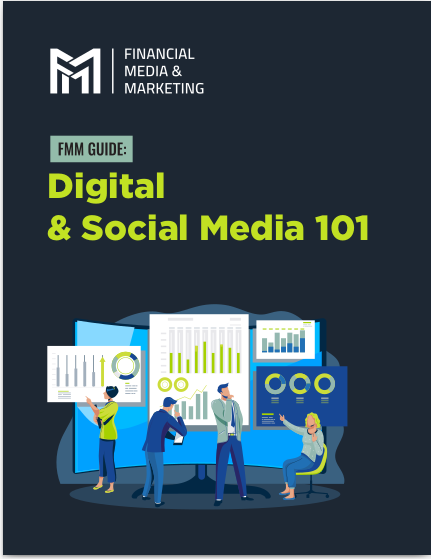Key Takeaways
-
Automating your follow-up process helps you stay consistently engaged without relying on manual effort or memory.
-
A structured system reduces missed opportunities, enhances professional reputation, and saves significant time.
Why Manual Follow-Ups Are Failing You
If you’re still relying on spreadsheets, sticky notes, or your memory to follow up with leads or clients, you’re bound to miss a few. In 2025, there’s no reason to let poor follow-up methods derail your professional momentum.
Here’s what tends to happen with manual systems:
-
You forget to reach out on time
-
You overlook a warm lead in a cluttered inbox
-
You waste time tracking communication history
-
You appear inconsistent or unreliable to your clients
Your time is too valuable to waste chasing messages. Automating the process ensures continuity and professionalism, even while you focus on more strategic tasks.
Understanding the Anatomy of an Automated Follow-Up System
An effective follow-up automation system is more than just a reminder tool. It’s a layered system that keeps your outreach flowing smoothly across different channels and timelines.
Key components include:
-
Triggers: Set off follow-up sequences based on specific actions (e.g., someone fills out a form or doesn’t respond in 48 hours).
-
Timelines: Pre-set delays to space messages properly and avoid appearing too aggressive.
-
Multi-channel Messaging: Automate emails, texts, and even scheduling reminders.
-
Templates: Reusable messages tailored to different scenarios, improving consistency.
-
CRM Integration: Connects all communication data to client records, making it easy to review past interactions.
Where Automation Adds the Most Value
In 2025, professionals have more channels than ever to manage. Automation is not about removing the human touch; it’s about reducing repetition while enhancing your responsiveness.
Client Onboarding
Set up onboarding sequences with welcome messages, instructions, and touchpoints. Clients feel guided from day one, and you don’t miss a beat.
Lead Nurturing
Warm leads often cool off if left unattended. Automating lead nurturing keeps the relationship alive without any daily effort from you.
Project Management Updates
Automated check-ins or deadline reminders keep stakeholders aligned without frequent meetings or emails.
Post-Meeting Follow-Ups
Automatically send summaries, action items, or thank-you notes within hours of your meetings.
Inactive Client Re-engagement
If someone hasn’t responded or ordered in a while, automation detects it and reintroduces you with thoughtful messaging.
How to Start Building Your Follow-Up System
You don’t need to overhaul everything overnight. Building a system in stages allows for smoother implementation and testing. Here’s how you can approach it:
1. Identify Gaps in Your Current Process
Where do you consistently fall short? Look at emails that were never sent, leads that weren’t pursued, or clients who dropped off silently.
2. Map Your Typical Communication Timeline
For each type of client or lead, create a timeline:
-
Day 0: First contact
-
Day 2: First follow-up
-
Day 7: Second follow-up with added value
-
Day 14: Break email or alternative channel
-
Day 30: Final check-in or feedback request
3. Write Templates with Personalization in Mind
Automated does not mean robotic. Use merge fields or tags for names, services, or dates to keep it relevant. Keep language clear, friendly, and professional.
4. Choose the Right Channels
Email is standard, but don’t overlook:
-
SMS reminders for scheduling
-
Voicemail drops
-
LinkedIn messages (if relevant to your industry)
5. Define Exit Criteria
Know when to stop the sequence. You don’t want to be the professional who keeps emailing long after a client has lost interest. Use conditions like “response received” or “appointment booked” to exit automation.
Making Your Workflow Feel Seamless (Not Robotic)
The goal isn’t just automation; it’s smart automation. You want your communications to feel like thoughtful touchpoints, not machine-made noise.
Here’s how to humanize your automation:
-
Use natural language: Avoid stiff or overly polished language.
-
Add a delay between steps: Instant responses can feel mechanical. A few hours or a day’s pause feels more natural.
-
Leave room for manual intervention: Allow yourself to step in when needed. For instance, pause the sequence if someone replies.
-
Test with yourself first: Send a sample sequence to your own inbox to experience how it feels.
Managing Volume Without Losing Personal Touch
Once you scale, it’s easy to lose the personal feel. But automation, when set up with care, lets you do both—manage hundreds of contacts and still sound like you’re writing one-on-one.
Best practices include:
-
Segmenting your audience: Customize sequences based on buyer type, service level, or interaction stage.
-
A/B testing your messages: See which formats or subject lines generate better responses.
-
Using dynamic content blocks: Insert variable content based on recipient type.
-
Monitoring interaction history: Your CRM should log opens, clicks, and replies to keep your automation responsive.
Common Pitfalls to Avoid
Even good intentions can fall flat if automation is poorly managed. Here are the top issues you’ll want to dodge:
-
Over-automation: If you automate every possible task, it can feel impersonal.
-
No review process: Failing to review templates regularly leads to outdated messaging.
-
Ignoring time zones: Messages sent at 3 AM won’t make a good impression.
-
Using generic subject lines: They get ignored or end up in spam.
-
Skipping manual oversight: You still need to monitor how people are reacting.
Tracking Results and Improving Over Time
Like any other professional system, follow-up automation should be tracked and optimized. Regular improvements are the difference between mediocre and outstanding performance.
Metrics to track include:
-
Open rates: Indicates how compelling your subject lines are.
-
Reply rates: Measures engagement.
-
Conversion rates: Tells you if your automation leads to action.
-
Time to response: Shows how quickly leads or clients reply after automation begins.
Aim to review your sequences monthly. A 90-day full audit is a good timeline to revisit all workflows and make updates based on what’s working.
Building Trust Through Consistency
People trust professionals who follow through. A smooth, consistent follow-up system shows:
-
You value their time and attention
-
You’re organized and proactive
-
You deliver on promises
Over time, this consistency builds a brand identity that others rely on. Your communication habits speak volumes about your professionalism.
A Final Thought on Automating Communication the Right Way
Follow-ups are the lifeblood of client relationships, yet too many professionals let them slide due to time constraints or distractions. In 2025, that’s no longer an excuse. With the right automation framework, you can keep your communication clear, timely, and consistent—without burning out.
Start small, build with purpose, and continuously refine. Let technology support your professionalism, not replace it.










